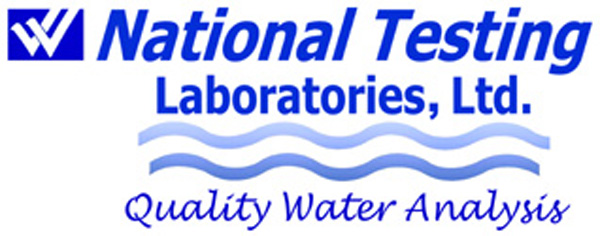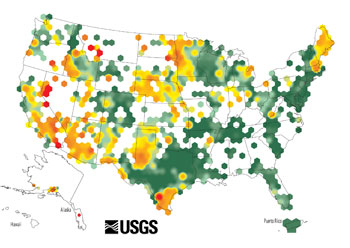
Information, Tests and Solutions to Improve Your Health and Water Quality. |
Copper and CancerLearn about Copper and Cancer Risks.Copper increases the risk and/or growth of: o Triple Negative Breast Cancer[5] Ø Cervical Cancer[6] Ø Gastrointestinal Cancer[7][8] Ø Glioblastoma[9] Ø Leukemia[10] Ø Oral Squamous Cell Carcinoma[13] Ø Ovarian Cancer[14][15][16][17][18] Ø Pancreatic Cancer[19][20][21][22] Ø Prostate Cancer[23][24][25][26] Ø Thyroid Cancer[27] Learn more about Copper and Cancer with a FREE Research Report at www.naturalcancerreports.com/Copper-Cancer.html[1] Free Radic Biol Med. 2007 Nov 1;43(9):1271-8. Copper chelation by D-penicillamine generates reactive oxygen species that are cytotoxic to human leukemia and breast cancer cells. Gupte A, Mumper RJ. [2] J Inorg Biochem. 2012 Nov;116:172-9. Cu(GlyGlyHis) effects on MCF7 cells: copper uptake, reactive oxygen species generation and membrane topography changes. Matias AC, Villa dos Santos, et al. Center for Natural Sciences and Humanities, Federal University of ABC - UFABC, Avenida dos Estados, 5001, Bloco B, 09210-170, Santo André, SP, Brazil. [3] BMC Res Notes. 2012 Jul 6;5:194. Trace elements as tumor biomarkers and prognostic factors in breast cancer: a study through energy dispersive x-ray fluorescence. Silva MP, Soave DF, et al. Departamento de Física, Universidade de São Paulo, FFCLRP, 14040-901 Ribeirão Preto, SP, Brazil. [4] Eur J Gynaecol Oncol. 2011;32(3):307-8. Copper and zinc concentrations in Nigerian women with breast cancer. Ajayi GO. Department of Obstetrics & Gynaecology, Prenatal Diagnosis and Therapy Centre, College of Medicine, University of Lagos, Lagos, Nigeria. [5] Ann Oncol. 2013 Jun;24(6):1491-8. Tetrathiomolybdate-associated copper depletion decreases circulating endothelial progenitor cells in women with breast cancer at high risk of relapse. Jain S, Cohen J, et al. Department of Medicine, Weill Cornell Medical College, New York, NY 10065, USA. [6] Indian J Physiol Pharmacol. 2002 Apr;46(2):159-66. Serum copper levels in carcinoma of ovary and cervix. Saxena P, Yadav S, et al [7] Zhonghua Yu Fang Yi Xue Za Zhi. 1991 Jul;25(4):205-7. [Analysis of serum levels of selenium, zinc, and copper in 132 patients with malignant tumors]. Jia ZG. [8] Free Radic Biol Med. 2007 Nov 1;43(9):1271-8. Copper chelation by D-penicillamine generates reactive oxygen species that are cytotoxic to human leukemia and breast cancer cells. Gupte A, Mumper RJ. [9] Am J Pathol. 2013 Oct;183(4):1293-305. Role of collagen matrix in tumor angiogenesis and glioblastoma multiforme progression. Mammoto T, Jiang A, [10] Free Radic Biol Med. 2007 Nov 1;43(9):1271-8. Copper chelation by D-penicillamine generates reactive oxygen species that are cytotoxic to human leukemia and breast cancer cells. Gupte A, Mumper RJ. [11] Free Radic Biol Med. 2007 Nov 1;43(9):1271-8. Copper chelation by D-penicillamine generates reactive oxygen species that are cytotoxic to human leukemia and breast cancer cells. Gupte A, Mumper RJ. [12] Oncol Rep. 2013 Jul;30(1):269-75. Knockdown of copper chaperone antioxidant-1 by RNA interference inhibits copper-stimulated proliferation of non-small cell lung carcinoma cells. Cai H, Peng F. Department of Radiology, University of Texas Southwestern Medical Center, Dallas, TX 75390-8542, USA. [13] Head Neck. 2013 Feb;35(2):250-6 Lysyl oxidase and enhancement of cell proliferation and angiogenesis in oral squamous cell carcinoma. Shih YH, Chang KW, et al Institute of Oral Biology, School of Dentistry, National Yang-Ming University, Taipei, Taiwan. [14] BMC Cancer. 2010 Feb 25;10:72. Lipophilic aroylhydrazone chelator HNTMB and its multiple effects on ovarian cancer cells. Et al [15] Free Radic Biol Med. 2007 Nov 1;43(9):1271-8. Copper chelation by D-penicillamine generates reactive oxygen species that are cytotoxic to human leukemia and breast cancer cells. Gupte A, Mumper RJ. [16] Int J Gynecol Cancer. 2007 Jan-Feb;17(1):220-8. Comparison of trace element concentrations in cancerous and noncancerous human endometrial and ovary tissues. Yaman M, Kaya G, Simsek M. [17] Indian J Physiol Pharmacol. 2004 Oct;48(4):486-8. Serum copper, ceruloplasmin and thiobarbituric acid reactive substance status in patients with ovarian cancer. Nayak SB, Bhat VR, Mayya SS. [18] Indian J Physiol Pharmacol. 2002 Apr;46(2):159-66. Serum copper levels in carcinoma of ovary and cervix. Saxena P, Yadav S, et al [19] Proc Natl Acad Sci U S A. 2013 Nov 26;110(48):19507-12. Bioavailable copper modulates oxidative phosphorylation and growth of tumors. Ishida S, Andreux P, et al [20] Prog Clin Biol Res. 1988;259:161-75. The status of zinc, copper, and metallothionein in cancer patients. Ebadi M, Swanson S. [21] Clin Biochem. 1985 Dec;18(6):373-5. Copper, zinc and copper/zinc ratio in chronic pancreatitis and pancreatic cancer. Fabris C, Farini R, et al [22] Cancer Detect Prev. 1981;4(1-4):439-42. Epidemiologic characteristics and trace elements in pancreatic cancer in Greece. Manousos O, Trichopoulos D, et al [23] Asian Pac J Cancer Prev. 2012;13(9):4249-53. Association between trace element and heavy metal levels in hair and nail with prostate cancer. Karimi G, Shahar S, et al. Department of Nutrition and Dietetics, Universiti Kebangsaan Malaysia, Jalan Raja Muda A Aziz, Kuala Lumpur, Malaysia. [24] Mol Cancer Res. 2012 Oct;10(10):1282-93 Copper modulates zinc metalloproteinase-dependent ectodomain shedding of key signaling and adhesion proteins and promotes the invasion of prostate cancer epithelial cells. Parr-Sturgess CA, Tinker CL, et al. Division of Biomedical and Life Sciences, Lancaster University, Lancaster, UK. [25] Biol Trace Elem Res. 2012 Oct;149(1):5-9. Association of metals and proteasome activity in erythrocytes of prostate cancer patients and controls. Neslund-Dudas C, Mitra B, et al. Department of Public Health Sciences, Henry Ford Health System, Detroit, MI, USA. [26] Afr Health Sci. 2010 Mar;10(1):2-8. Trace elements and vitamin E status in Nigerian patients with prostate cancer. Adaramoye OA, Akinloye O, Olatunji IK. Department of Biochemistry, University of Ibadan, Nigeria. [27] Bratisl Lek Listy. 2012;113(12):718-20. Serum copper levels in benign and malignant thyroid diseases. Kosova F, Cetin B, et al, Celal Bayar University, Department of Biochemistry, Manisa, Turkey. Return from Copper and Cancer to Copper Toxicity |
You are here: Home Page > Human Heavy Metal Toxicity Symptoms & Testing > Copper Toxicity > Copper and Cancer
Natural Care Solution:
Helping People Improve Their Health Naturally Since
1998
|
Quality Water Testing and Analysis for Residential and Commercial Water Sources
My Mission
Provide you with accurate information, economical and
effective tests
and products to evaluate your body and water for toxic metals and remove them if
necessary.
Keith D. Bishop
Clinical Nutritionist
B.Sc. Pharmacy
Health Coach©

*These statements have not been evaluated by the Food and Drug Administration. These products are
not intended to diagnose, treat, cure or prevent any disease.
The information and contents of this website are based upon government, medical,
university and health industry research information.
Consult with your physician or a qualified health care provider before making any changes in your medical or
treatment program.
Please let us know if you have problems viewing anything or ordering on this page:
Thank you for visiting www.ToxicWaterSolution.com! If you find this information helpful or
interesting please send a link to your family and friends.
Copyright © 2007-2014 Natural Care Solution, LLC Keith D. Bishop, Clinical Nutritionist, B.Sc. Pharmacy






